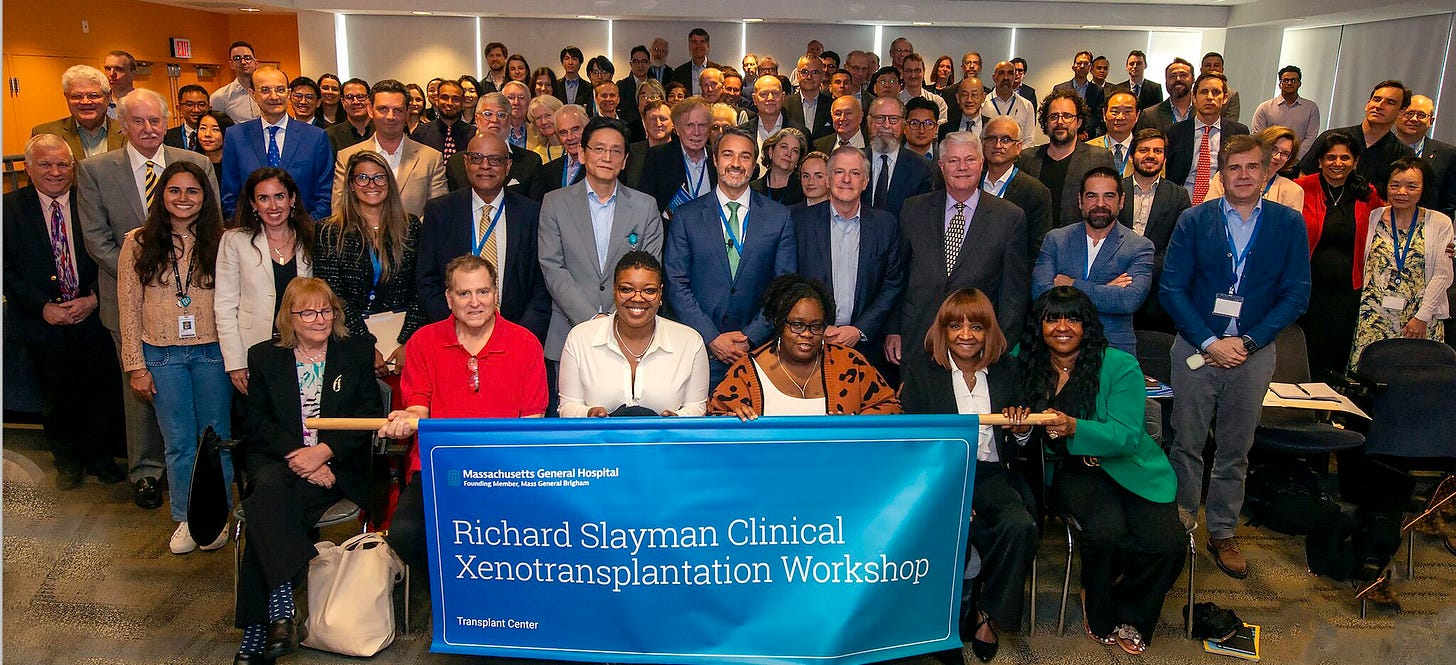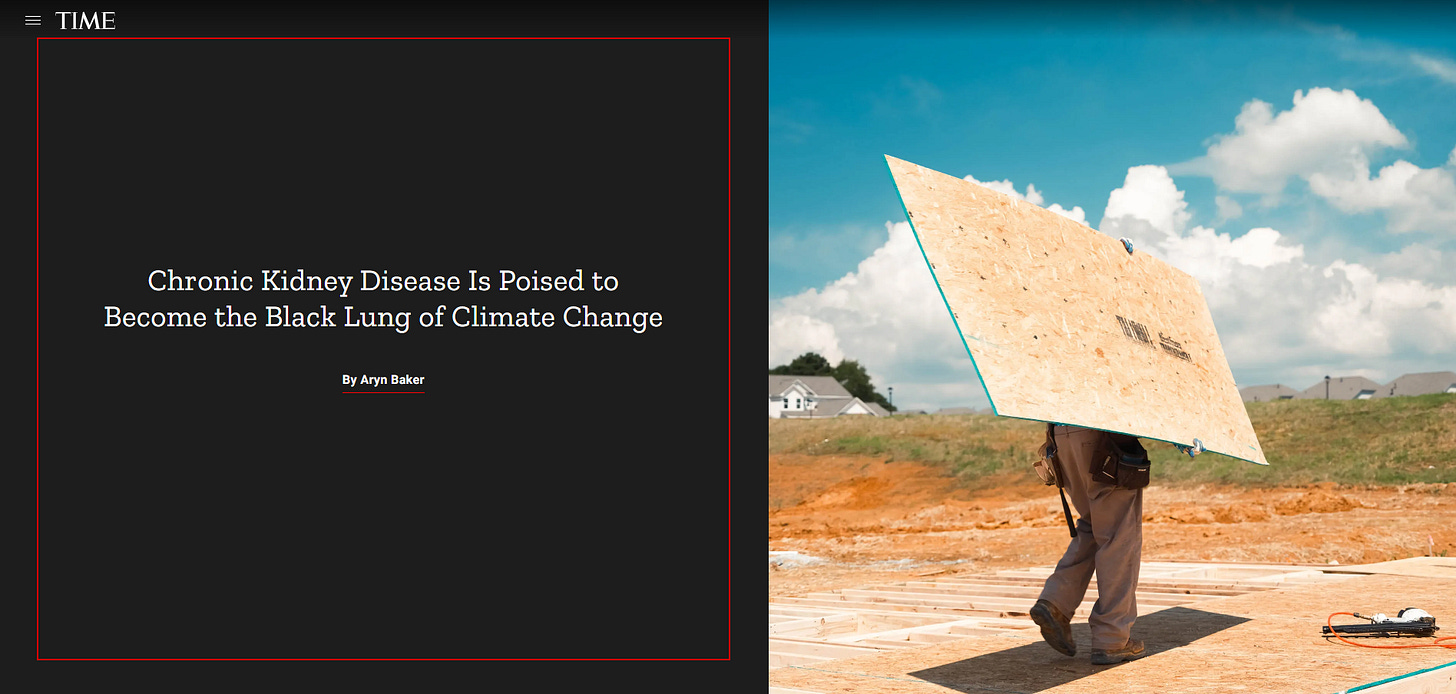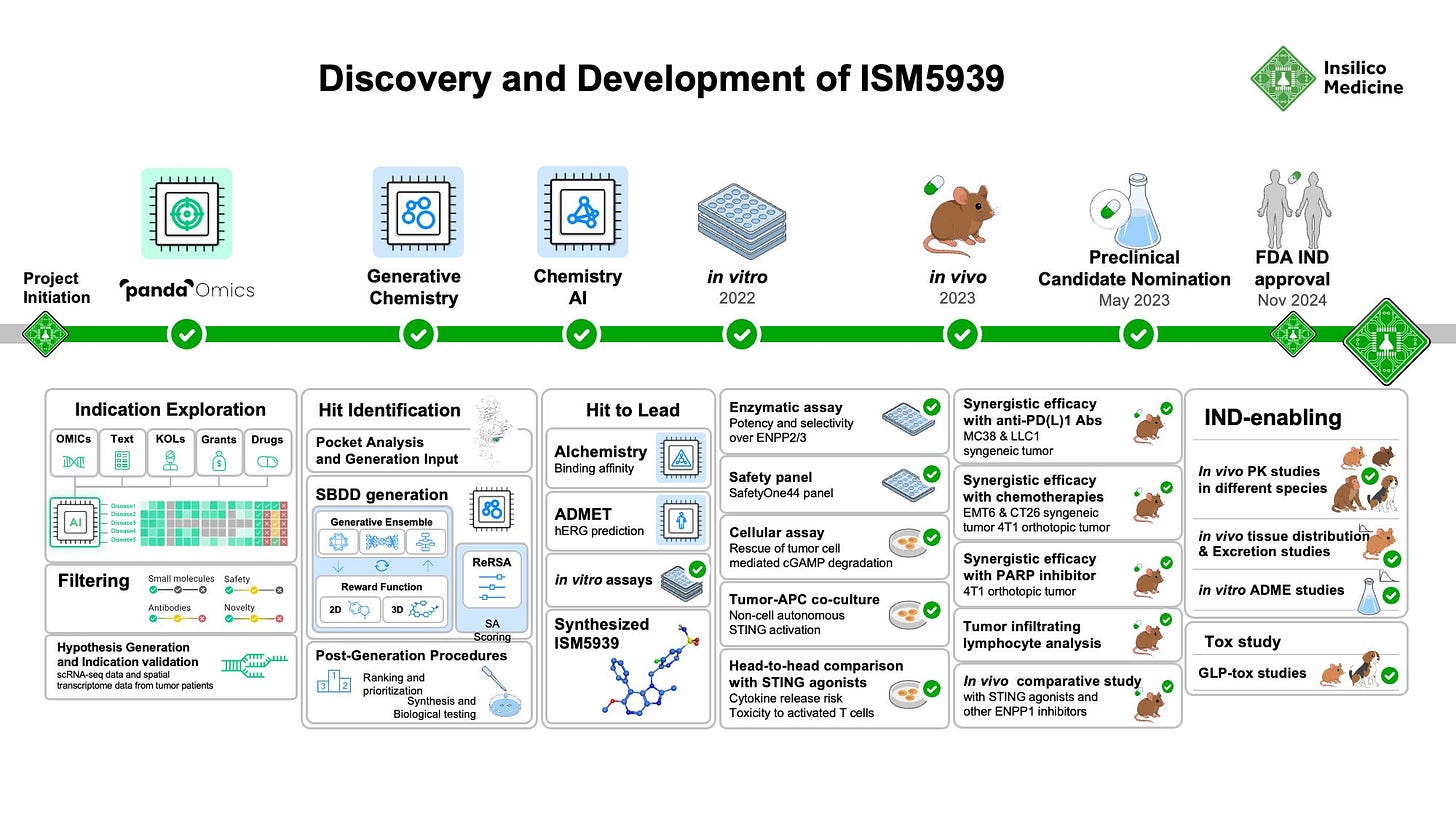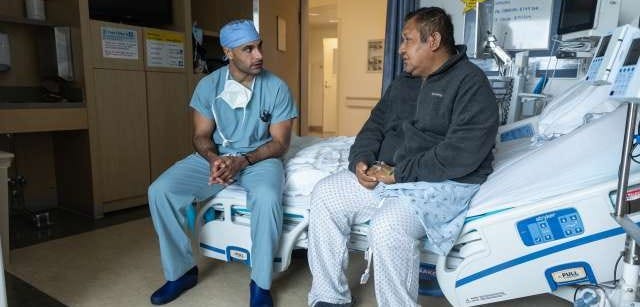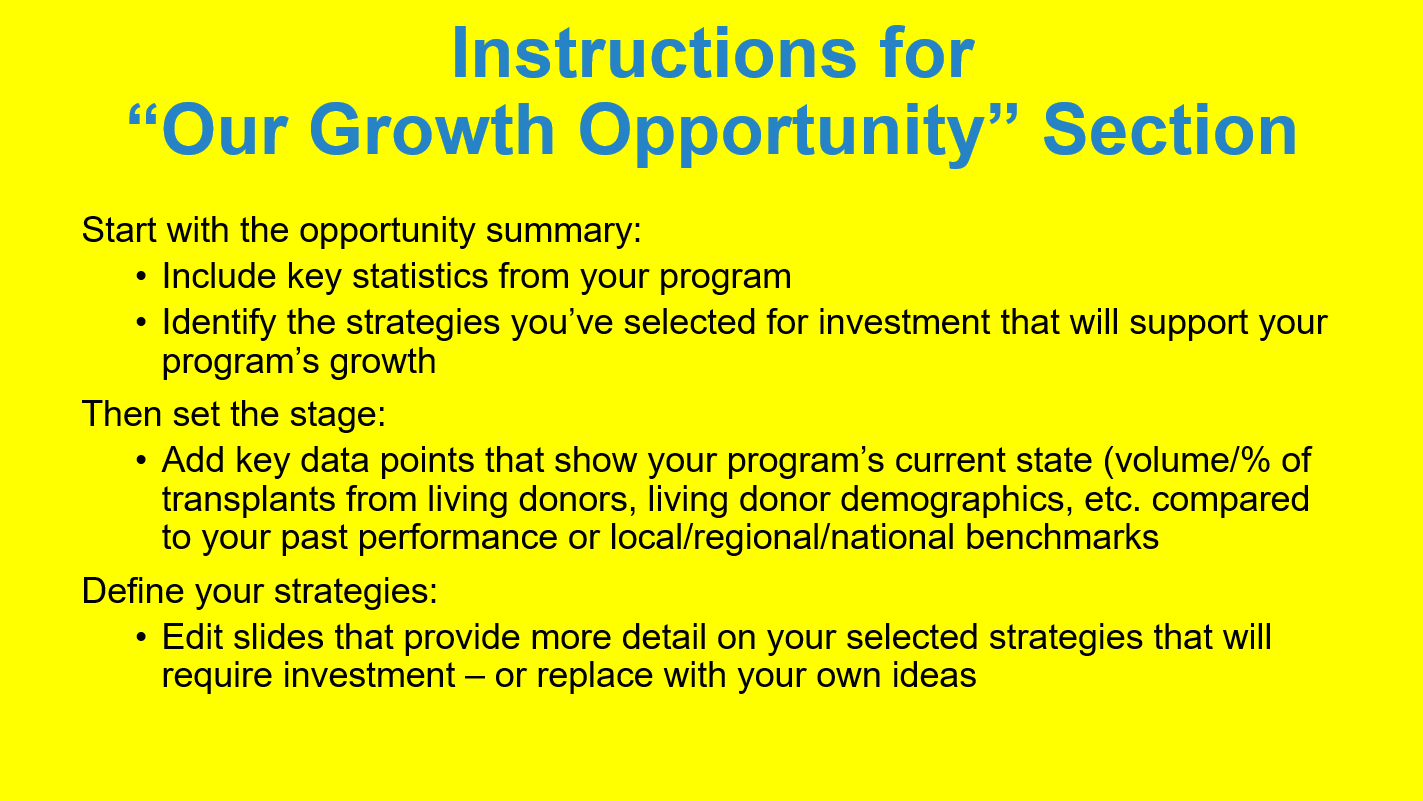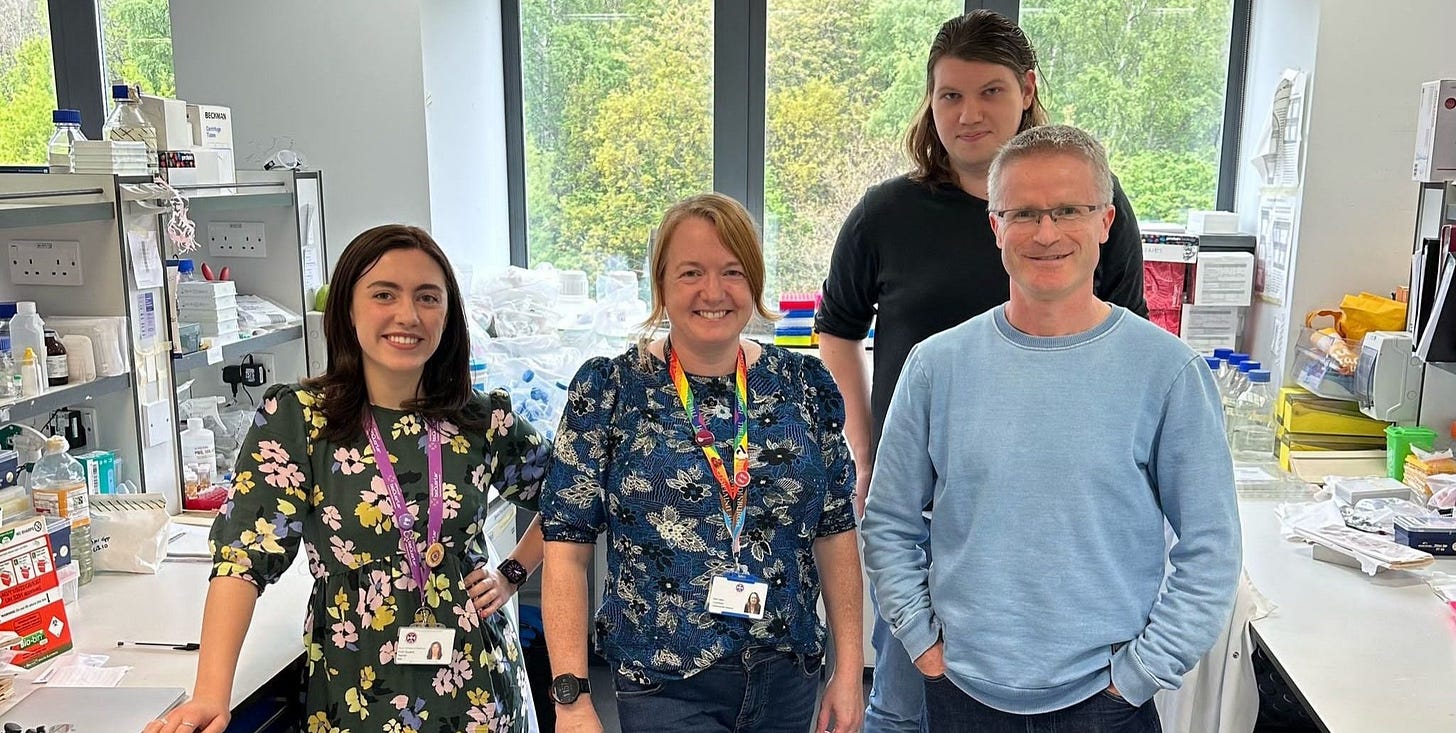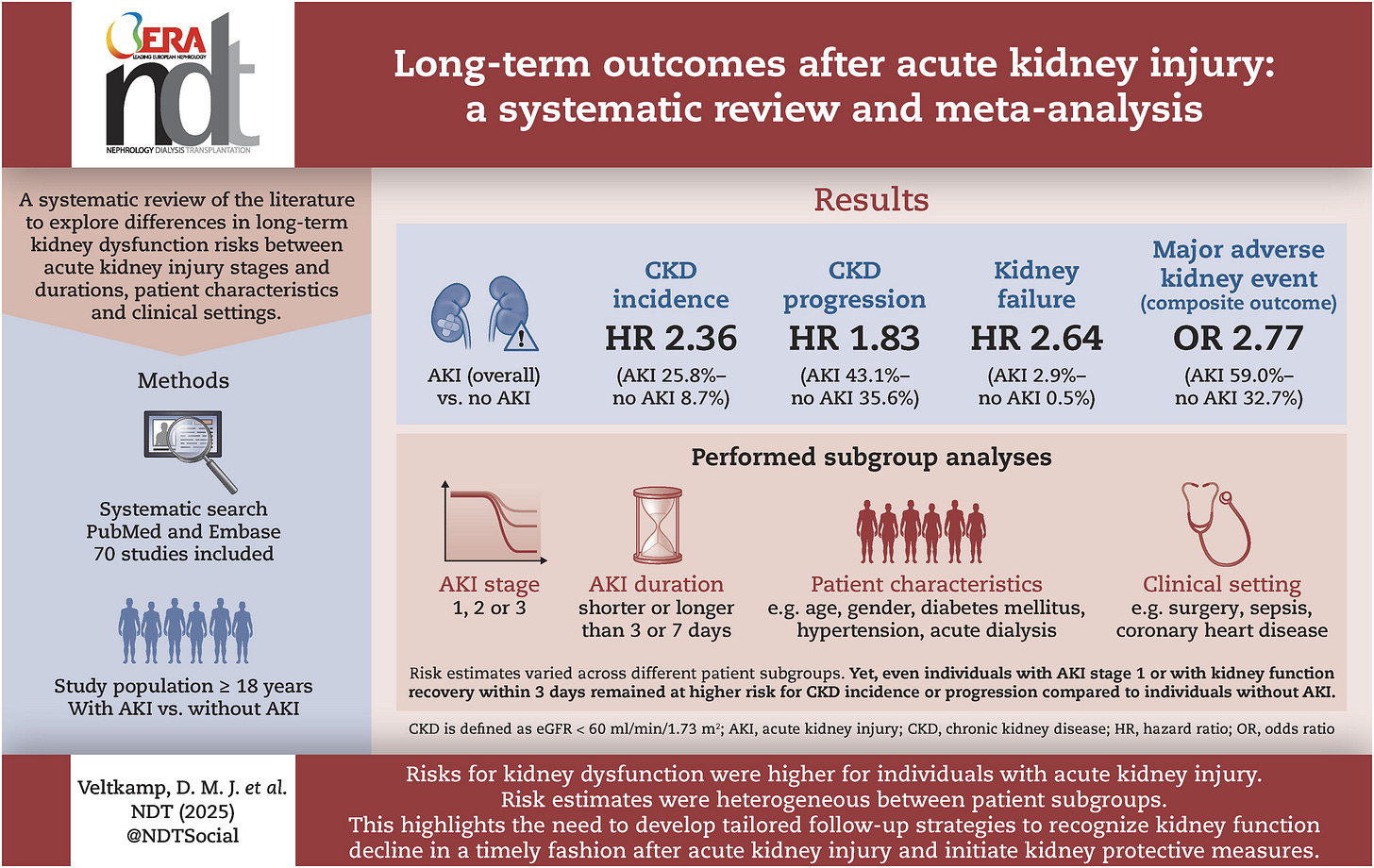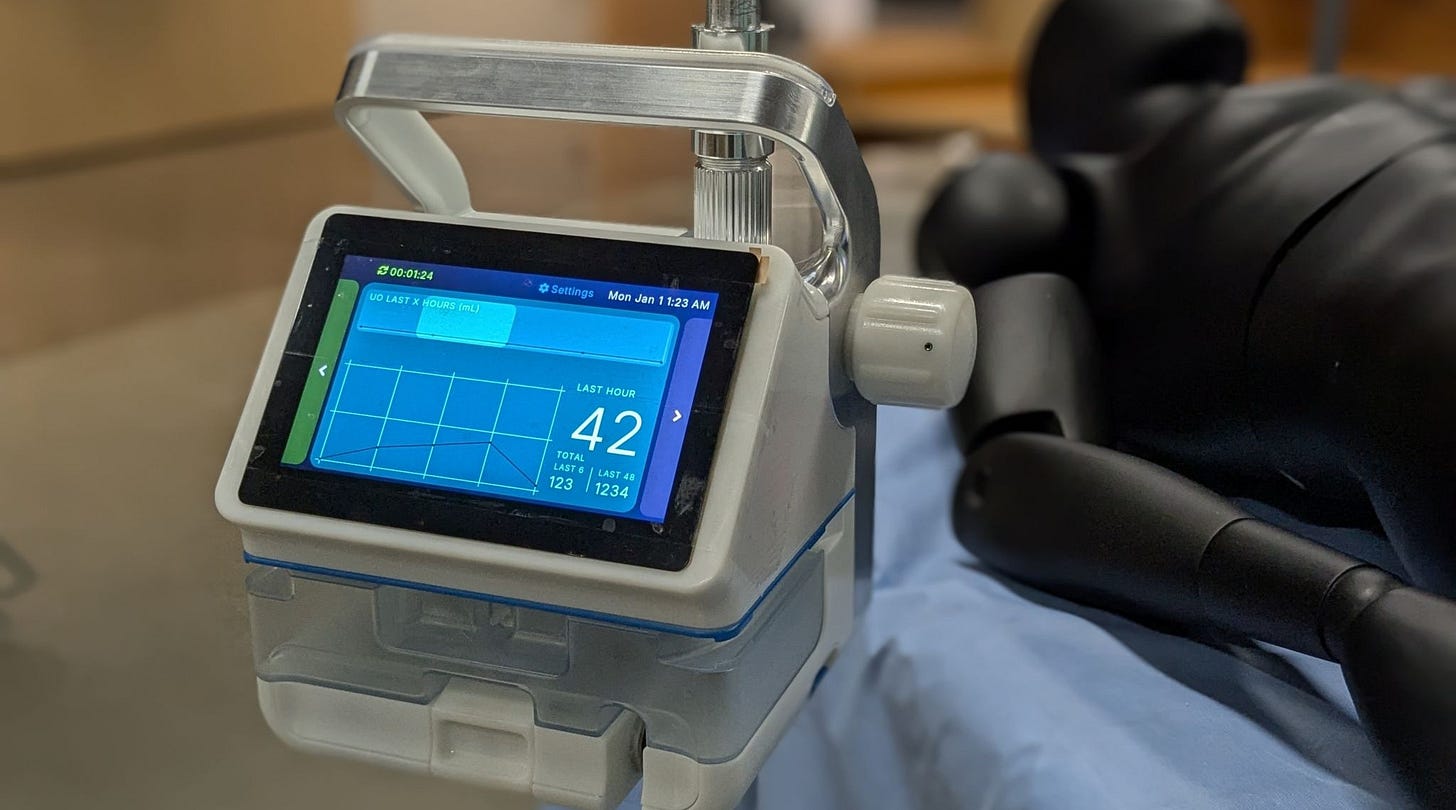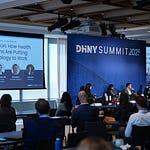Welcome back to our monthly recap of the top stories, research, community wins and debates shaping the future of kidney health. This month, we’re tracking a powerful moment for xenotransplantation as global leaders gathered to honor Rick Slayman and chart a course for clinical progress. We observe ripple effects of CMS’s latest KCC model changes—from cautious optimism to tension over transplant incentives—and spotlight new research tying extreme heat exposure to long-term kidney damage, adding urgency to the climate-health conversation. You’ll also find new findings in AKI, dialysis access, and workforce trends, plus upcoming events and open roles across the field.1
Have tips or feedback? Hit reply or drop us a note here.
Reading time: 25 minutes
In This Issue
Top Stories
This week’s top stories capture a field at an inflection point—balancing bold breakthroughs, shifting policy winds, and rising global threats. From a landmark workshop honoring Richard Slayman and accelerating xenotransplantation, to new questions around the future of value-based kidney care, to mounting evidence that climate change is fueling a silent kidney epidemic, each story underscores both the urgency and momentum shaping what comes next.
1. First-Ever Rick Slayman Xeno Workshop Held at MGH
Last week, the first-ever Richard Slayman Clinical Xenotransplantation Workshop brought together over 140 global leaders across academia, biotech, and regulatory bodies at Massachusetts General Hospital. Named in honor of the first person to receive a gene-edited pig kidney, the event balanced cutting-edge science with deep humanity—anchored by powerful patient and family voices, including Faren Woolery, living recipient Timothy Andrews, and his wife, Karen. The gathering marked a turning point for a field long defined by promise and setbacks, with open exchange of unpublished data and intergroup trust signaling a more unified future.
Momentum is building. As Science recently reported, 2025 may be the year gene-edited pig organs begin to meaningfully address the organ shortage crisis. United Therapeutics and eGenesis are moving toward more FDA-sanctioned trials, with xenokidney recipients like Mr. Andrews and Ms. Towana Looney blazing a path for others. “This workshop represents the hope [Richard] envisioned,” Woolery said. If early outcomes hold, we may soon see signs in dialysis units that ask, “Have you ever thought about getting a xenotransplant?” Special thanks to Dr. Leo Riella, Macey Levan, and Dr. Massimo Mangiola for sharing reflections from the workshop. We’ll have more on this in an upcoming edition.
2. A Public Health Blindspot: CKD and Climate-Driven Labor Risk
A growing body of research warns that climate change isn’t just a planetary crisis—it’s a kidney crisis. A sweeping Nature feature and past TIME reporting spotlight a deadly and poorly understood form of chronic kidney disease, CKD of non-traditional origin (CKDnt), afflicting young, otherwise healthy laborers from El Salvador to Sri Lanka. With no clear links to diabetes or hypertension, CKDnt is increasingly tied to sustained heat exposure, dehydration, and recurrent acute kidney injury (AKI)—conditions now intensified by rising global temperatures.
The toll is staggering: over 20,000 deaths in Central America alone, with thousands more suspected worldwide. Yet in most places, the disease remains invisible. Few public health agencies track CKDnt, and outdoor workers—migrant laborers, miners, brickmakers—often lack access to diagnosis, dialysis, or transplant options. "This is the black lung disease of today's outdoor laborers," says Jason Glaser, whose La Isla Network has documented the link between extreme heat and kidney injury. Studies show even a single AKI episode can multiply the risk of CKDnt fivefold within five years. As kidney care leaders warn of climate-driven AKI and rising dialysis needs, nephrologists are being urged to prepare for what could become a global surge in preventable kidney disease. The WHO’s recent move to prioritize CKD globally may help spark overdue attention. We’ll be diving deeper into this topic in a standalone piece soon—including commentary from the field and potential policy responses.2
3. Reactions to KCC Model Changes
Recalculating… CMS’s recent updates to the Kidney Care Choices (KCC) Model—extending it through 2027 while introducing new risk adjustments—have sparked a mix of optimism and concern across the field. DaVita praised the extension, calling it a validation of collaborative, integrated kidney care and highlighting improved transplant rates, home dialysis adoption, and optimal starts across its 22 KCEs. But the American Society of Nephrology expressed concern, particularly about the elimination of the Kidney Transplant Bonus and new benchmark discounts, warning that such changes could undercut incentives for progress and strain nephrology practices.
This divergence underscores the central tension of the KCC redesign: how to balance the measurable gains in patient outcomes with growing pressure to demonstrate net savings. This tension is seen and felt differently across provider types and sizes, which I think is captured well by these two responses. As one person put it, the challenge is no longer whether value-based kidney care can work—it’s whether we’re willing to invest long enough to see the full return. We’ll continue tracking this closely.
Visual of the Month
AI from start to IND: The full discovery arc of Rentosertib. This week, Insilico Medicine shared encouraging clinical data from a Phase 2a study of a drug fully discovered and designed by generative AI—Rentosertib, a TNIK inhibitor for idiopathic pulmonary fibrosis (IPF). The visual below charts the full path from target identification through molecular generation, in vitro/in vivo validation, and FDA IND approval in November of 2024. The therapeutic potential here is incredible across anti-inflammation, CNS and metabolic applications. Where are you seeing AI-driven drug discovery being used to discover or develop treatments for kidney disease?
News
UCLA performs world’s first human bladder transplant. UCLA surgeons completed the first-ever human bladder transplant, combining it with a kidney transplant in a patient with end-stage kidney disease. Led by Dr. Nima Nassiri, the eight-hour surgery marks a potential new treatment pathway for patients with non-functioning or removed bladders, avoiding the long-term complications of intestine-based urinary reconstruction (UCLA Health).
Otsuka data rattles Vera in IgAN therapy race: Shares of Vera Therapeutics dropped nearly 30% after Otsuka reported that its drug sibeprenlimab reduced proteinuria by 51% in Phase 3 data—outpacing the 42% reduction seen in Vera’s own study. While analysts warn against direct cross-trial comparisons, the perception of a stronger dataset puts pressure on Vera ahead of its planned FDA filing this fall. Otsuka’s drug could be approved by November 28 (STAT, Biopharma Dive).
AstraZeneca and Aptar team up on AI kidney diagnostics: AstraZeneca has licensed its biomarker-based AI algorithms to Aptar Digital Health to accelerate early detection of chronic kidney disease during eye exams. By embedding CKD screening into fundus imaging—similar to diabetes diagnostics—the partners aim to catch the disease earlier in high-risk populations and improve long-term outcomes (Aptar, Gene Online).
Phraxis receives FDA approval for EndoForce vascular connector – The newly approved EndoForce simplifies arteriovenous graft placement for dialysis patients by enabling endovascular venous anastomosis, reducing tissue trauma and streamlining procedures. In its pivotal study, the device demonstrated a 92% cumulative patency rate at 6 months (EV Today, h/t Geoff Beecher).
Mayo Clinic discovery may boost heart—and kidney—transplant viability: Researchers found that canrenone, a common heart drug, can reverse cellular damage during cold storage by blocking protein clumping that impairs organ function. The treatment nearly tripled pumping strength in donor hearts and showed promise for preserving kidneys, lungs, and livers—potentially expanding the transplant donor pool (Mayo Clinic).
Sierra Donor Services partners with Paragonix in California: Working with UCI Health, the program is successfully placing kidneys previously deemed too risky, helping to reduce discard rates and address California’s transplant waitlist crisis. Of the 100,000 people on the transplant waiting list, nearly 20,000 are in California, with 85% of them in need of a kidney (LinkedIn).
Pyx Health acquires FarmboxRx with $47.5M investment to deepen food-as-medicine model: Backed by S2G Investments, Pyx Health has acquired FarmboxRx to strengthen trust-based member engagement for vulnerable populations. The partnership combines Pyx's mentor-driven care navigation with FarmboxRx’s condition-tailored food delivery to address food insecurity, incentivize preventive care, and support long-term behavior change. The deal highlights the growing convergence of social determinants and scalable health engagement models (Pyx Health).
NKF launches Living Donation Business Case Toolkit: This first-of-its-kind resource helps transplant centers build a financial case for expanding living donor programs. The toolkit includes an in-depth ROI calculator with program-specific, preloaded Medicare Cost Report data, FAQ page, and PowerPoint template designed for administrators and health system leaders—supporting the mission that no one should die waiting for a kidney (NKF).
Policy News
House budget bill proposes sweeping Medicaid reforms: The 2025 Federal Budget Reconciliation Bill, passed by the House on May 22, includes major changes to Medicaid eligibility, ACA subsidies, and HSA rules. Provisions include new work-reporting mandates and cuts projected to reduce Medicaid enrollment and funding by billions over the next decade—raising red flags for health equity and access, especially among kidney patients, nearly half of whom rely on Medicaid (KFF, Signals).
CMS outlines major health tech upgrades to modernize Medicare: At a closed-door meeting in DC, CMS leaders confirmed plans to roll out several tech initiatives, including a national provider directory, federated identity verification (e.g. Login.gov), and a digital insurance card for Medicare beneficiaries. Other updates include expanding Data at the Point of Care, patient access APIs, and participation in a trusted data exchange network. The initiatives aim to reduce friction for patients and providers, with pilots like Oklahoma’s directory serving as models for national scale (CMS, X, Fierce Healthcare).
Medicare tech agenda guided by ex-Palantir, Main Street Health execs: CMS and ONC are shaping a bold modernization effort with input from former private-sector leaders, signaling a pivot toward AI-driven tools and real-time clinical guidance. Their joint RFI explores how to improve digital experiences, enforce data sharing rules, and spur innovation for Medicare beneficiaries—underscoring the agencies’ intent to partner closely with tech stakeholders (STAT, paywalled)
No one’s left to run cancer.gov: As part of the Trump administration’s federal workforce cuts, the National Cancer Institute’s Office of Communications and Public Liaison was eliminated, leaving no staff to run cancer.gov, respond to media, or update critical patient resources. The move has sparked public outcry and raises serious concerns about access to trusted cancer information and support services (The Cancer Letter).
Research
Study identifies inflammatory cell targets to prevent CKD progression: A Nature Communications study from the University of Edinburgh used multiomic and spatial transcriptomic analysis to map human kidney injury. Researchers identified a population of VCAM1⁺ICAM1⁺ proximal tubular cells driving inflammation and fibrosis in both AKI and CKD. Targeting these cells with AP-1 inhibitors or senolytic agents reduced fibrosis in mouse models—offering new hope for halting disease progression (Nature, Kidney Research UK).
Finerenone + empagliflozin combo shows dual benefit: A NEJM study reports that combining finerenone with the SGLT2 inhibitor empagliflozin improves kidney and cardiovascular outcomes in patients with CKD and type 2 diabetes—suggesting additive benefits from dual pathway inhibition (NEJM).
Social isolation shortens survival and raises stroke risk in CKD: A large UK Biobank study found that moderate to severe social isolation significantly reduced survival and accelerated cardiovascular disease—particularly stroke—among people with CKD. The effect was partially mediated by sarcopenia and CVD. Researchers call for routine social support assessments as part of comprehensive CKD care to help prevent early mortality (JAHA, h/t Paul Gordon).
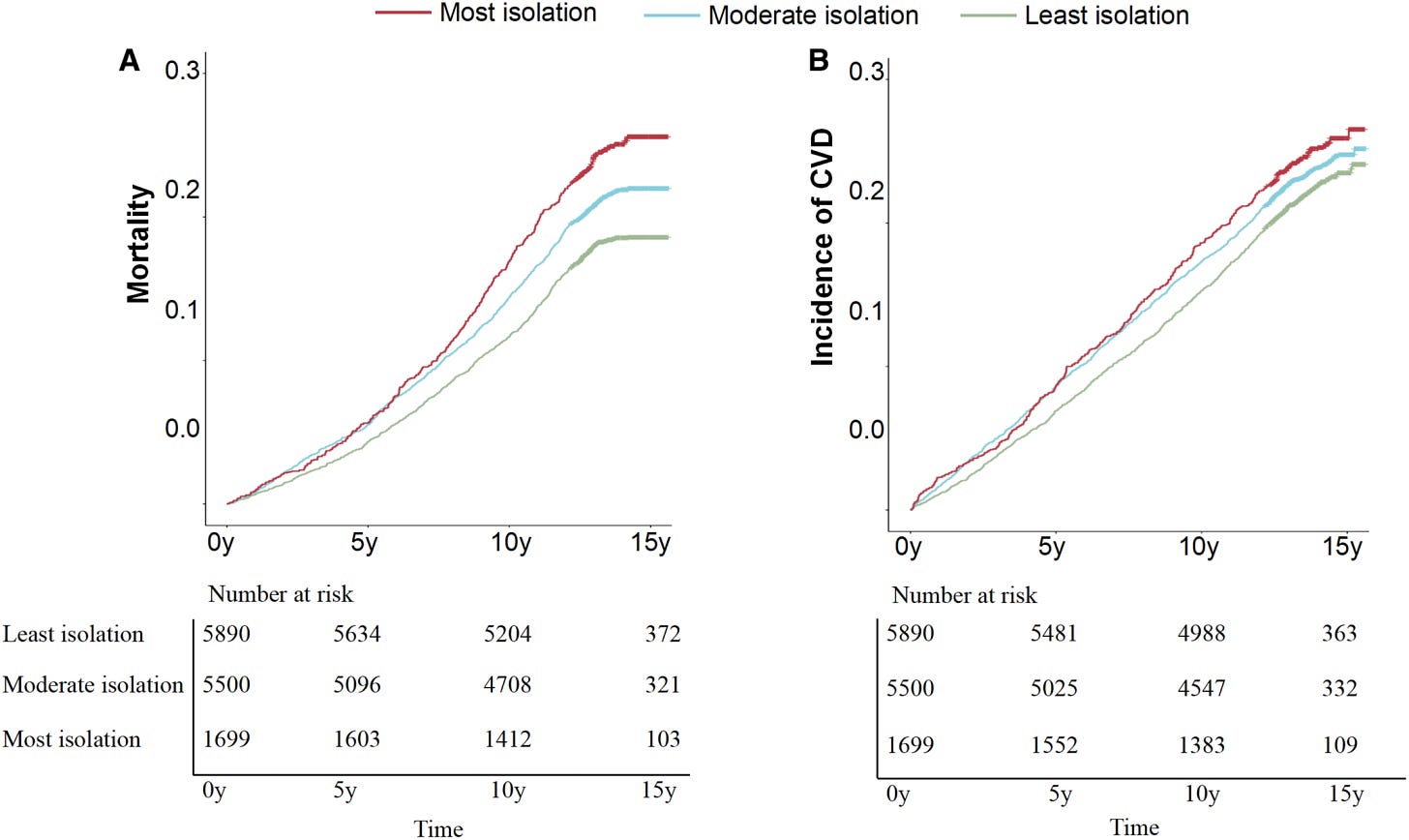
SCD therapy significantly lowers NLR in AKI patients on CKRT: A pooled analysis of 108 patients across multiple adult AKI trials found that treatment with SeaStar Medical’s Selective Cytopheretic Device (SCD) reduced neutrophil-to-lymphocyte ratios (NLRs)—a low-cost, widely available marker of systemic inflammation. Reductions were driven by both decreased neutrophil and increased lymphocyte counts. The results support the SCD’s role in rebalancing immune responses in hyperinflammatory states like AKI and sepsis (Nephron).
Transplants offer less survival benefit for older, high-risk patients: A major international study, presented this week at the 62nd ERA Congress, reveals that the long-accepted survival advantage of deceased-donor kidney transplantation does not extend equally to every patient and every donor organ. Among patients over 75, five-year survival with transplant was only marginally better than dialysis, prompting calls for more transparent, individualized counseling (ERA Congress 2025).
VasQ-supported fistulas show improved outcomes in dialysis access study: A retrospective study of 394 patients found that radiocephalic AVFs created with the VasQ external support device had significantly higher rates of 4-week maturation (82.6% vs. 69.7%) and successful cannulation (82.6% vs. 71.6%) compared to anatomical snuffbox AVFs. VasQ was also associated with fewer interventions, improved cannulation success, and greater TDC removal by 6 months. The findings suggest VasQ may offer an advantage in preserving access in complex patients, particularly older adults and those with diabetes (JVS, h/t Robert Shahverdyan).
Even mild or brief AKI linked to long-term kidney decline: A meta-analysis of 70 studies and 1.8 million patients found that any AKI—even stage 1 or lasting <3 days—substantially raises the risk of CKD, kidney failure, and major adverse kidney events. Patients with diabetes, hypertension, or cardiovascular disease were at particularly high risk. Authors call for tailored post-AKI surveillance and kidney-protective strategies (NDT).
APP survey shows younger clinicians filling nephrology gaps: The 2024 NKF workforce survey reveals a younger, predominantly female and white APP workforce stepping into nephrology roles. With 30% of respondents aged 30–39 and 25% with <5 years of experience, mentorship and on-the-job training are increasingly common. APPs average 108 patients/week, cover three dialysis units, and split time across CKD clinics, HD, and inpatient consults. Despite rising responsibilities, research participation and kidney disease education remain limited (Healio).
Milbank reports chart the infrastructure path for CHCs in value-based care: Two new Milbank Memorial Fund reports outline essential capabilities and partnership strategies for community health centers (CHCs) navigating value-based payment. The first report offers a practical framework across four domains—leadership, operations, technology, and finance—to guide CHCs in VBP adoption. The second highlights real-world models where CHCs have partnered with PCAs, HCCNs, ACOs, and VBP enablers like Aledade to scale infrastructure and manage population health under risk contracts (Milbank Memorial Fund).
Full-risk Medicare Advantage outperforms Traditional Medicare on quality and efficiency: A study of 6.5 million person-years across 17 physician groups found that 2-sided risk MA models outperformed traditional Medicare in 16 of 20 care measures. These included lower inpatient admissions, fewer 30-day readmissions, reduced ED use, and higher medication adherence—highlighting the potential of delegated risk arrangements to support value-based care (AJMC).
Community
Pump 2.0: Ten Years of Innovation at Roivios. Roivios market a decade of work on JuxtaFlow, the world’s first negative pressure renal assist device, highlighting a bold path forward in enhancing kidney function through novel approaches in much needed areas (LinkedIn).
First-Ever Dialysis Access Workshop for Fellows. The American Society of Diagnostic and Interventional Nephrology partnered with Henry Ford to launch a new hands-on training program for nephrology fellows focused on vascular access (LinkedIn, h/t Lalathaksha Kumbar).
Loma Linda hosts Webinar on Managing PKD. On June 6 Loma Linda hosted a webinar to offer expert insights on managing polycystic kidney disease, including KDIGO guideline takeaways and clinical application insights (Loma Linda SoM).
Post-Transplant Testing Advances. New editorial highlights the role of minimally invasive diagnostics in improving kidney transplant outcomes and preventing rejection (Today’s Clinical Lab, h/t Tina Liedtky).
The Vigilance of Post-Transplant Life. In a powerful reflection, Jen Benson shared what blood work really means to transplant recipients: a monthly ritual of hope, fear, and gratitude. For many, every vial drawn is a lifeline—and a reminder that every 'bonus day' comes with weight (LinkedIn).
Innovation
Op-ed calls for regulatory reforms to revitalize U.S. biotech. Brian Finrow and Sandeep Patel argue that American biopharma doesn’t need a moonshot—it needs pragmatic reforms: 1) faster low-risk trial reviews, 2) simplified contracting, 3) decentralized trial adoption, and 4) AI-enabled transparency in FDA data. With China gaining ground, they warn the U.S. must cut red tape to stay competitive (STAT).
Amplify Bio Launches $200M Fund for Technical Founders. Amplify Partners unveiled a new fund focused on technical founders in biology, including those advancing bio-compute, AI-driven R&D, and next-gen diagnostics (Amplify).
Former ARPA-H director reflects on bold bets and what’s at stake. In her powerful reflection, the agency’s inaugural director looks back on launching 30+ first-of-their-kind programs—from curing blindness to preventing age-related diseases—and urges Congress to preserve ARPA-H’s unique model. Renee Wegrzyn points to the agency’s long-range vision, high risk tolerance, and relentless outcome focus as key to unlocking transformative health innovation (LinkedIn).
Egypt’s Public Health Victory Offers Lessons for CKD. Egypt eradicated Hepatitis C in just 10 years through mass screening and political will—offering a blueprint that some are now adapting to kidney disease (Pathogens, h/t Bogdan Milojkovic).
Northernmost teases upcoming NoMo device. CEO Ron Mills shared this image on LinkedIn yesterday. In February, the company announced it had partnered with Mayo Clinic to develop its Kidney Pump system (LinkedIn).
Events Calendar
European Renal Association (June 4-7 in Vienna, Austria)
AMGA Value Roundtable (June 9-10 in Washington, DC)
LSI Asia Summit (June 10-13 in Singapore)
International Podocyte Conference (June 11-13 in Hamburg)
Benesch Nephrology & Dialysis Conf (June 26 in Chicago, IL)
Jobs
Director, Enterprise Sales — Papa
Sr Analyst, Medical Economics — CVS Health
Advanced Fellowship, GN / Onco-nephrology — Northwell
US Marketing Director — Abbott
Director, Generative AI – Natera
Manager, Product Enablement & Training — Interwell Health
Assoc Market General Manager — ChenMed
Transplant Medical Science Liaison — Sanofi
Manager, Clinical Supply Ops — Otsuka
Sr Dir, VB Performance Management — Centene
Vice Chief, Medical Subspecialties — Cleveland Clinic Abu Dhabi
Sales Mgr – Digital Health – Vantive
Browse 100+ more at jobs.signalsfs.com…
Work with Signals Group
Want to help shape what comes next in kidney health? Signals Group is expanding and finding new ways to support the growth of this community. Whether you’re looking for new talent, visibility, or expertise, we’d love to hear from you.
Share — Tell us what unmet needs you’d like to see solved
Sponsor — Share your work with 15,000 kidney professionals
Subscribe — Support independent kidney news and research
Grow — Partner with us to reach your next company milestones
This audio summary may include variations in pronunciation and is intended for informational purposes only. For complete accuracy and source attribution, please refer directly to the original written materials and cited sources. Always consult trusted references when interpreting medical or scientific content.
If you are interested in this topic, I would encourage you to learn more about La Isla Network. LIN is a research and advisory organization working worldwide to address heat stress and other environmental exposures. I will be writing more about this in an upcoming brief.
![Signals From [Space]](https://substackcdn.com/image/fetch/$s_!IXc-!,w_80,h_80,c_fill,f_auto,q_auto:good,fl_progressive:steep,g_auto/https%3A%2F%2Fsubstack-post-media.s3.amazonaws.com%2Fpublic%2Fimages%2F9f7142a0-6602-495d-ab65-0e4c98cc67d4_450x450.png)
![Signals From [Space]](https://substackcdn.com/image/fetch/$s_!lBsj!,e_trim:10:white/e_trim:10:transparent/h_72,c_limit,f_auto,q_auto:good,fl_progressive:steep/https%3A%2F%2Fsubstack-post-media.s3.amazonaws.com%2Fpublic%2Fimages%2F0e0f61bc-e3f5-4f03-9c6e-5ca5da1fa095_1848x352.png)
![Signals From [Space]](https://substackcdn.com/image/fetch/$s_!NnOt!,w_152,h_152,c_fill,f_auto,q_auto:good,fl_progressive:steep,g_auto/https%3A%2F%2Fsubstack-post-media.s3.amazonaws.com%2Fpublic%2Fimages%2F688fc47b-7202-4a2e-b4f4-fea2b047ab1b_1500x1500.png)

